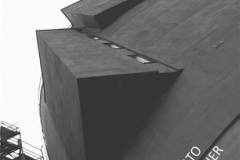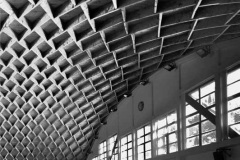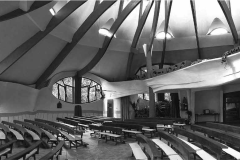The Space Architect
Attila Kőszeghy: From Plato to Le Corbusier
Text: Zoltán Rácz
Attila Kőszeghy is a musician, poet, painter, physicist, philosopher from Debrecen, whose visible imprint is his architecture. In his book published now, he tries to summarise the theoretical research that guided him in designing his striking and exciting houses. Attila Kőszeghy is an extraordinarily thorough researcher into the nature of the invisible ripple effects that pervade our environment, and he reveals the tangible and measurable rules of this in our formal traditions. It is based on this that his architectural works should be examined. The way he thinks about his use of materials and design opens up philosophical perspectives. He frees the building material from materiality, softly shaping, twisting, pressing and stretching. Freed from its rigidity, the material transcends its own potential, and this elevates it to another level of quality and spirituality. The masters break down and produce these constructions with suffering, agony, but with their souls. This architecture pushes the boundaries of the material world, and does not build a temple to the glory of the invisible world with abstract theories, but recognises and presents it in our existing environment. It follows the Platonic concept of space with geometric shapes, from the easily interpreted form of the tetrahedron to the world of the rhomboid, concave ring-shaped icosahedron. He finds evidence in early Assyrian or even Stone Age geometric representations to identify it formally with geomagnetism. This may be the space-filling substance the structure of which he is attempting to unravel. In the course of a historical survey of philosophical systems, he arrives at an interpretation of space in the principles of 20th-century modernism, the architecture of the Bauhaus and Le Corbusier.




